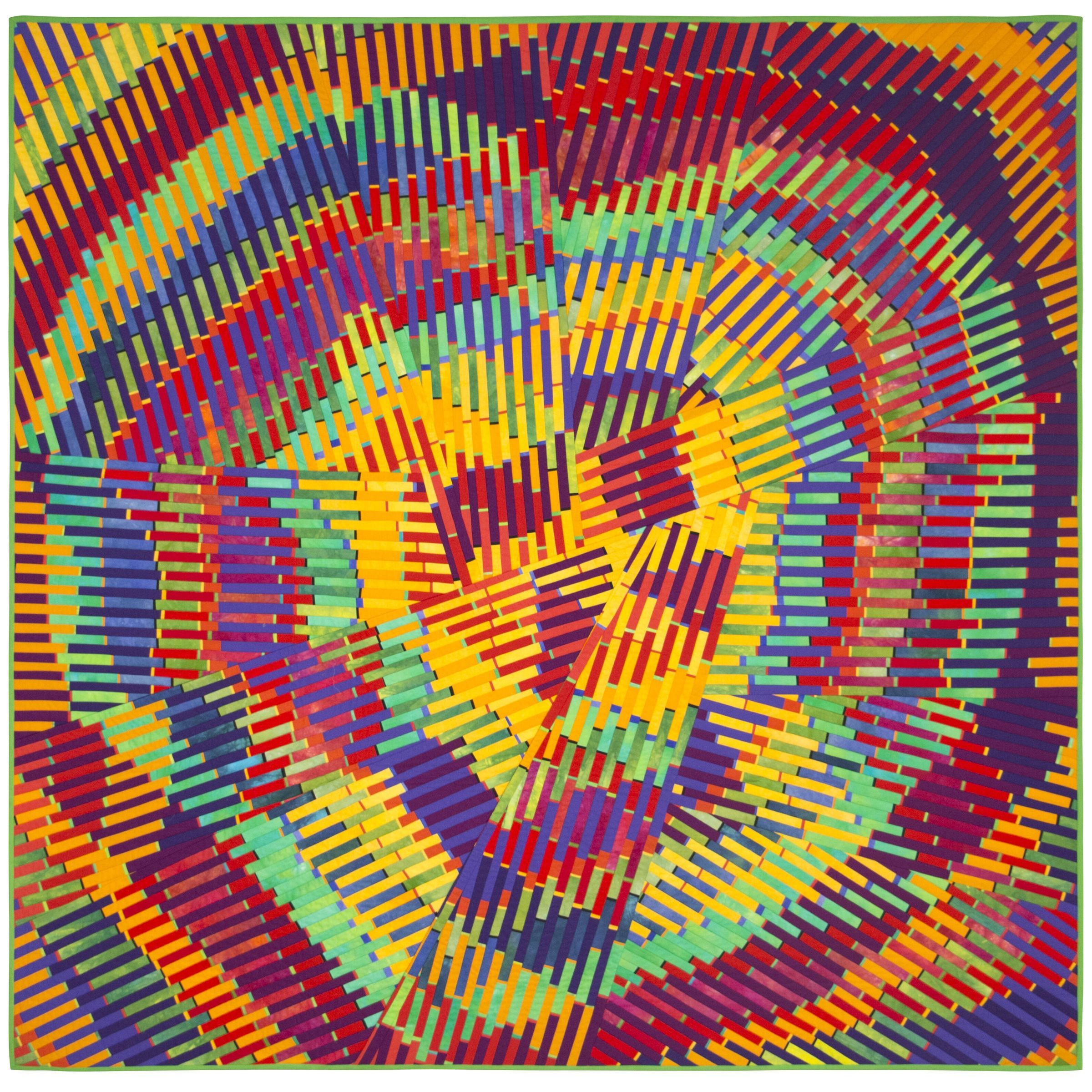Label Type
Artist CommentaryLabel
"My experience with needle and thread began when I started an embroidered sampler at the age of seven. I learned to knit from my fifth grade teacher and I still make a sweater or two each year. Sewing and thinking about fabric have always been pleasurable to me, and it seemed very natural to turn to this skill for a career. I was trained as a painter at Rutgers University, New Brunswick, NJ. There I learned to develop my sense of color. Since 1978 I have been making art quilts full time.
My images are abstract and non-geometric and do not rely on a block/grid structure. I am seeking to recreate the apparent artlessness of nature's organic forms. I am fascinated by the flicker of light on moving water, the shimmer of the Northern Lights, the drift of clouds, and the patterns of pebbles washed up on a beach. I am also drawn to structured patterns as in the photography of cells and crystals, to units of aggregated texture such as brick and stone walls, circuit diagrams, and building facades. I have also studied Japanese design to see how it combines structure and natural forms.
I have also been influenced by the Abstract Expressionist painters who used color, texture, and gesture to represent emotional states. In my quilts I feel that I am exploring the same problems and expressing the same inspirations as if I were a painter using oils or acrylics. Instead, I choose colored cloth as a medium because I like the collage aspect of designing with fabric; I like selecting from available color rather than mixing paints; and I love the tactile pleasure of handling cloth.
I am interested in color interaction and creating a sense of movement and mood in my works. I tend to like vivid, active color but have used all palettes. All my quilts are made with a sewing machine. I use hand-dyed fabrics purchased from various sources. The technique that I use is machine strip piecing. I re-cut the pieced fabric and then machine quilt it in a process sometimes called ‘flip and sew quilting.’ I do not make a separate top that is later quilted.
When I start designing, I make a scale drawing in black pencil that is rather like a skeleton showing the underlying structure in directional lines. Next I go to my fabrics to choose the colors I want to use. I also decide how large the quilt will be and calculate how much stripped fabric I will need to sew to complete the quilt. Then I decide on color placement and the direction of the stitching rows of the quilting. At this point, I draw on muslin a full-sized image of my design showing all the machine quilting lines. Next, I begin cutting strips of solid colored cotton. I machine piece all the strips together, press the seams to one side, and then begin cutting straight across the stitching with a rotary cutter. This gives me long, pieced bands of cloth which I then sew down onto the muslin pattern that has been basted to a polyester batting and cotton cloth backing.
Although my images are planned and color choices are very deliberate, I work with a great deal of looseness as I begin to sew the quilt together. I can improve my original design and because of this flexibility I can discover unexpected visual events which may give me ideas to try out on the next piece."
